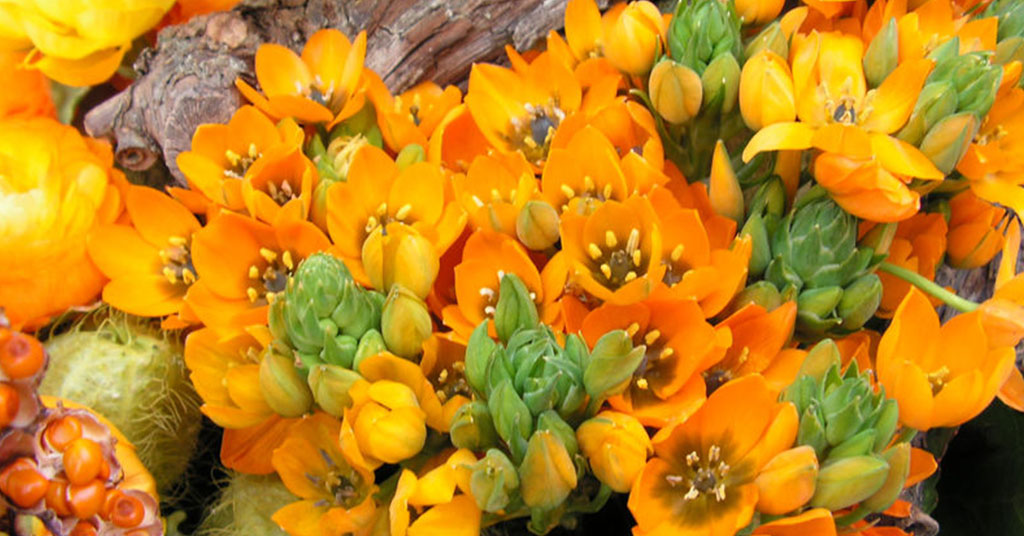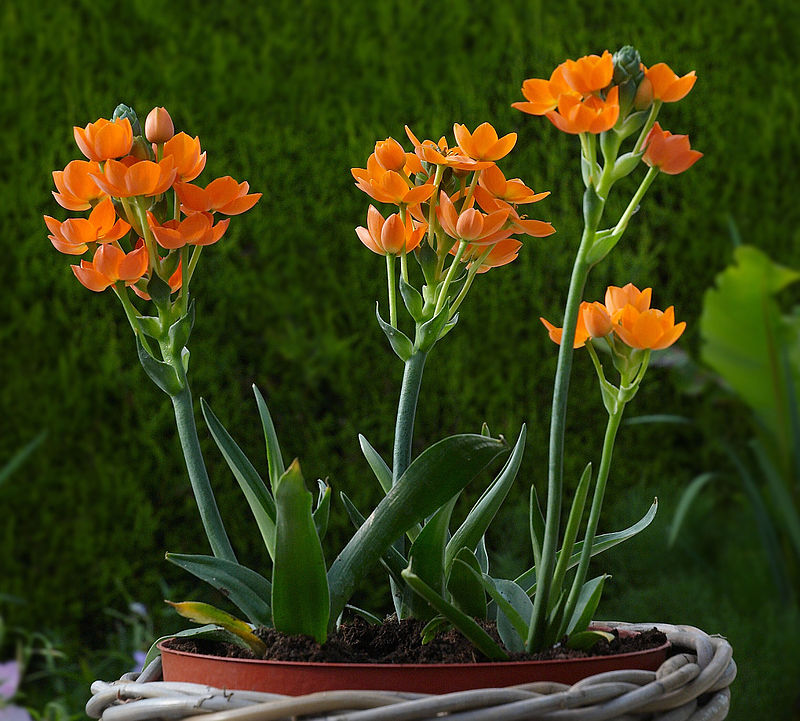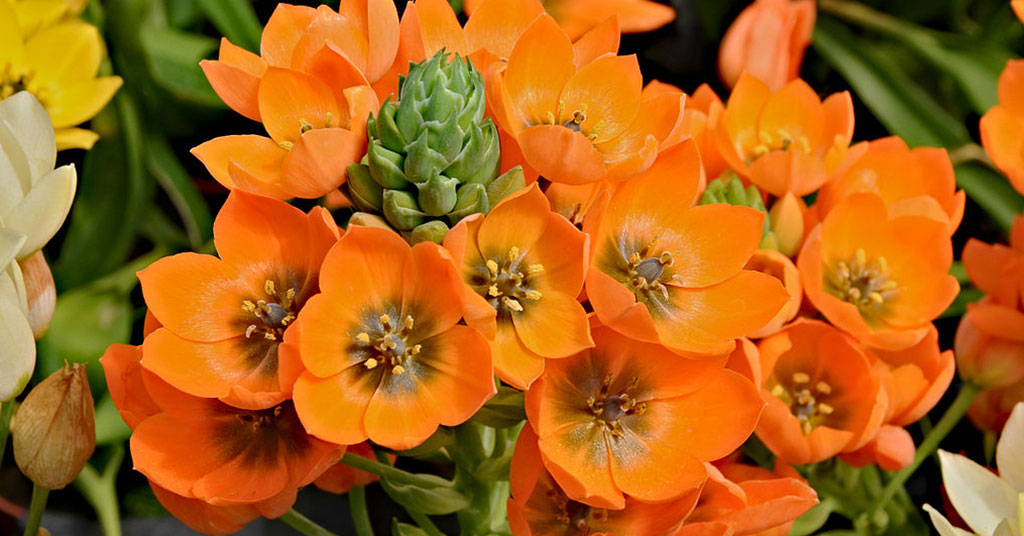I consider myself pretty fortunate – I live in zone 9a, which presents me with the opportunity to grow quite a few plants that I wouldn’t otherwise have been able to when I lived in colder climates. One of the cooler plants that I’ve added to my garden recently is the orange star plant. This interesting little plant produces amazing, orange flowers that attract different pollinators to my garden, and just provide a splash of orange color that I don’t really have otherwise.
What is the orange star plant?
The Ornithogalum dubium is is an easy-to-grow, perennial bulb originally native to South Africa and hardy to USDA zones 7-11. It grows thick leaves and clusters of stunning, star-like orange flowers, thus the name orange star plant.
- Latin name: Ornithogalum dubium
- Other names: Star of Bethlehem, sun star plant,
- Native to: South Africa
- Invasiveness: No
- Tenderness: Perennial
- Sun: Bright, indirect sunlight
- Water: Regularly
- Soil: Sandy
- Hardiness zone: 7-11
- When to plant: Fall
- Spacing: 2 inches
- Plant height: 1-2 feet
- Bloom period: Spring
- Container friendly: Yes
- Fertilizer: 20-20-20
- Toxicity: Yes
- Drought tolerant: No
- Deer resistant: Yes
- Pest resistant: Yes
How to grow the orange star plant

Ornithogalum dubium is an incredibly easy-to-grow plant. It is a flowering bulb native to South Africa and is not, at this time, known to be invasive outside of its native range. If you live in zones 7-11, you can plant this bulb outdoors in the fall in sandy soil out of direct sunlight. This plant is a bit thirsty and needs regular watering.
Plant bulbs 2 inches apart and expect plant height of up to 2 feet. This plant will flower earlier in the spring and prefers a balanced 20-20-20 fertilizer provided periodically during its growing season. Beware with kids and pets – every part of this plant is extremely toxic.
Watering your orange star plant
Despite its thick, succulent-like leaves, the orange star plant is not drought tolerant and will need regular watering. It prefers growing in damp, but not waterlogged, sandy soil. Be careful to not allow this plant to dry out. When grown in containers, it’s easy to maintain soil moisture. When planting outdoors, plant in either a damp climate or a well-irrigated garden.
Growing orange star plants in containers

Ornithogalum dubium takes to being planted in containers pretty well. Plant the bulb in sandy, well-draining soil and keep out of direct sunlight. Plan to repot every 2 years in order to promote new growth. If you live in a hardiness zone colder than zone 7, you’ll need to overwinter your orange star plant indoors.
When to plant orange star plant bulbs
Like most flowering bulbs, the best time to plant the orange star plant is in the fall. Allowing the bulb to overwinter and get better established before spring will ensure that it grows well and produces flowers in its first year.
How to collect orange star plant seeds
The seed pods of the orange star plant can be a little bit tricky to collect, as the pods will quickly fall from the plant after ripening. Keep a close eye on the flowers. As they die back, the seed pods will prepare to drop. You can harvest them a little bit early and allow the pods to dry in a cool, dry place. Once dried, you can shake the container they’re in to get the pods to release the seeds.
How to propagate orange star plants
Propagating these plants is super easy. If you want more orange star plants, all you have to do is collect their seeds in the early summer when the flowers have died, or dig them up in the fall and separate the bulbs. Once separated, you can plant each of the bulbs two inches apart. Before you know it, you’ll have a forest of rich, orange flowers every spring!
Toxicity
Be careful when planting the orange star plant in your garden. Know that the bulb, stems, leaves, and flowers are toxic to humans and pets alike if consumed. Ornithogalum dubium is not safe for cats, dogs, or people. If you have a dog, cat, child, or weird friend who is likely to give it a taste, it may be better not to plant them, or keep them in a container well outside of their reach. Proceed with caution when planting this otherwise lovely orange flower.













